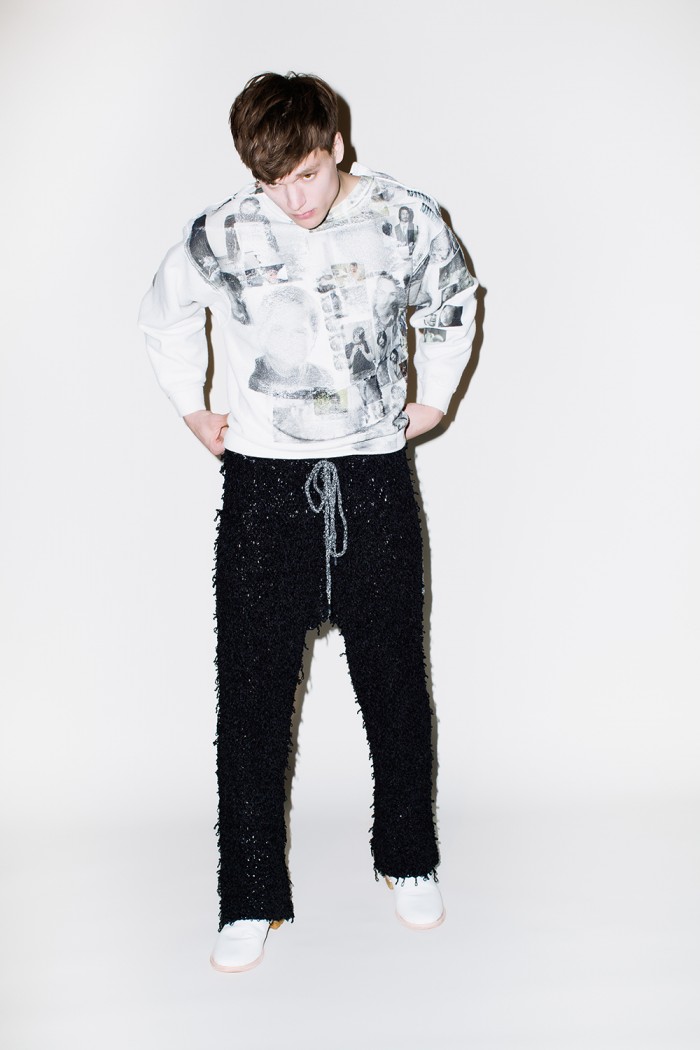Eckhaus Latta is a Hologram
We first met Mike Eckhaus at some grimy karaoke bar in Chinatown. It was a party to celebrate burgeoning brand Eckhaus Latta being stocked at Opening Ceremony for their first season—the drinks were cheap, the bad singing plentiful. Subsequent to that and prior to New York Fashion Week last year, Eckhaus worked furiously on materials like plastic, roping and translucent leather to get the collection ready to show at Milk Studios. This sort of mentality is what sets Eckhaus Latta apart from the oft-somber fashion pack. They’re more art kids than fashion kids, vying for dingy bars instead of polished venues for launches, and approaching design with a DIY slant.
Mike Eckhaus and Zoe Latta, two former RISD students, admit that growing up, their earliest memories of fashion didn’t really involve glamour. Eckhaus recalls his family’s utilitarian attitude about fashion, while Latta found her own identity amongst the Goodwill bins in Northern California, where fashion was more centralized around hiking gear and New Age garb. Nonetheless, they both ended up moving to New York City, living together and scoring design jobs. Starting a label seemed like the next logical step. “We were working in the industry and living together and felt that everything in New York City was so streamlined and propelled into a market-driven system,” Eckhaus tells me. “Our conversations and frustrations snowballed into what is now Eckhaus Latta.”
With only a few seasons under their belt, Eckhaus Latta already projects a strong identity. The duo’s unconventional take on design has led to installations featuring models walking on treadmills and tweeting, as well as fashion films starring elderly Chinese women practicing tai chi while wearing their garments. They say it’s all part of a journey to self-discovery, rather than the result of any deliberate planning: “The brand identity of Eckhaus Latta was never a strategic plan, but more just a mashup of our sensibilities, interests, and responses to the fashion economy,” Eckhaus says. “Right now, it feels more like an evolving idea, a hologram of ourselves, as two young people figuring something out.”
It seems to be working—the videos and installations are compelling. However, consumers and critics alike are equally drawn to the clothing, which appears lovingly handmade even as it continually employs unpredictable materials. “We really will use anything if we get excited about it,” Latta says. “We’ve found ourselves using a lot of utility plastics—construction tape, fishing line and lenticular sheeting. We used an Ikea cowhide rug for shoes last season… really, anything we can get our hands on!”
While it sounds crafty, individual pieces are actually very accessible and easily adaptable into anyone’s wardrobe. “In the beginning, the handmade was something we cherished,” she continues. “But it was also a sort of Luddite response to making or a blind way of feeling resourceful. We always have been and always will be interested in unconventional production practices, but now we’re figuring out when it’s necessary or not. Regardless, we’re still making everything in the US and sourcing most of our materials from closeout or dead stock resources.”







